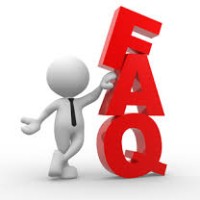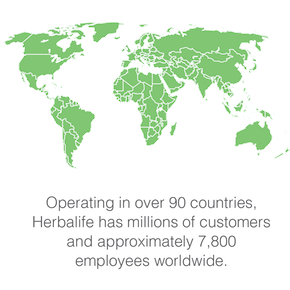
FAQs on MLM Companies
Anne T. Coughlan, July 2012
What is a legitimate MLM? ¹
MLM (multi-level marketing) is a retail distribution channel form including a manufacturer and a set of registered independent distributors who together distribute the manufacturer’s products directly to the market. MLM is therefore a type of direct selling; it is distinguished from other direct selling methods by its compensation system, which awards income to distributors both for their “personal sales” (sales they themselves generate to end-users) and the personal sales of distributors downline from them (that is, distributors who are recruited and mentored by the upline distributor). Almost all the member firms of the U.S. Direct Selling Association use the MLM form of compensation. MLM channels sell a wide variety of products and services, both in the U.S. and worldwide.
Is MLM just a fluke, or is it a recognized method of retailing?
MLM is far from a fluke. In 2011, there were 15.6 million direct-selling distributors in the U.S., who generated $29.87 billion in retail sales. Worldwide direct-selling sales were $153.727 billion in 2011, generated by over 91.5 million direct-selling distributors.² The U.S. is the largest country market for MLM sales in 2011.
What value does the MLM firm add, if the distributors generate the sales?
The MLM and its distributors form a symbiotic system, with the contributions and efforts of each being crucial to the success of the MLM business for both. The MLM firm provides distributors with a ready-made product line to sell; with a product infrastructure that reliably delivers products to them to sell, takes returns, and handles customer service inquiries; with a comprehensive IT infrastructure that manages logistics as well as payments; and with a compensation system that rewards distributors’ productive efforts to sell products and to develop and mentor downline distributors. The MLM firm also creates, monitors, and enforces important rules of conduct that protect all distributors as well as the MLM firm itself.
An entrepreneurial individual can engage in an MLM business opportunity without incurring all the overhead costs mentioned above, so MLM is an attractive option for entrepreneurs who do not have the financial wherewithal to build their own business from scratch, or to pay sometimes substantial franchising fees to start a franchise retailing business.
What are the value-added activities of distributors in the MLM channel?
The distributor contributes to the work of the MLM distribution channel in different ways than the MLM firm does. This is the heart of a good distribution channel partnership – that channel partners share the work of getting products to the market, educating consumers about them, and generating sales.
The distributor’s job in the MLM channel is to be a salesperson and, if s/he is interested, to be a sales manager as well. In the distributor’s “salesperson” role, s/he prospects for new customers; teaches them about the benefits of the MLM firm’s products; helps them place orders for products they want to buy and processes those orders; may also deliver the products directly to the customer; and follows up afterward to generate repeat sales. In the distributor’s “sales manager” role, s/he recruits interested individuals (often from the ranks of his/her retail customers) to register with the MLM company as distributors; and then mentors, develops, and trains them so that they too can generate sales and, if interested, recruit and develop new distributors downline from them as well.
Who can register as an MLM distributor? Are there restrictions?
There are very few restrictions on registration as an MLM distributor. The MLM firm generally imposes no requirements for prior sales skill, business-building, or retailing experience. There are typically no restrictions on the prospective distributor’s financial situation either. The main requirement across various MLM firms is that the prospective distributor be 18 years old (or if less than 18, have the signed permission of a parent or legal guardian). In the current challenged economy, this opportunity can be especially attractive to the unemployed or underemployed, and to those without the ready capital to start up other types of entrepreneurial businesses.
What motivates a person to become an MLM distributor?
The ease of registering as an MLM distributor makes it possible for people with many different motivations to find satisfaction with the MLM business opportunity, for example ³:
- The ability to personally consume preferred products at a wholesale price rather than pay retail prices;
- The desire to share the benefits of the MLM’s products with others;
- Short-term goal seeking (like making money for holiday gifts);
- Augmenting earnings from one’s full-time job, or retirement income;
- Building a full-time career selling and business-building; and/or
- Finding recognition for one’s achievements and a sense of community.
Because there are so many viable motivations beyond building a full-time career, it’s reasonable to see many MLM distributors who are satisfied with small (or even no) commission income from their MLM distributorship.
How does an MLM distributor earn income? 4
There are two major sources of MLM income. First, the distributor earns the difference between the retail price s/he charges and the wholesale price s/he paid to acquire product. Second, a business-builder can earn commissions on the sales of distributors downline from him/her. Beyond this, the distributor financially benefits from personal consumption at wholesale prices, because s/he otherwise would pay some retail markup to acquire these products for personal use.
In a legitimate MLM, a distributor does not earn any income from merely recruiting a downline distributor; income is earned based on sales generated, not the number of people downline from a distributor.
What is a pyramid scheme and why is it illegal?
Pyramid schemes compensate participants for recruiting other participants into the scheme, without regard to the generation of actual product sales. The FTC noted in the 1979 Amway case, finding that Amway was a legitimate MLM and not a pyramid scheme, that these payments could take the form of “headhunting fees,” or of commissions paid on mandatory product purchases by new recruits, leading to inventory loading.v
A pyramid scheme is illegal because its very compensation structure guarantees its ultimate demise, and because that demise comes with guaranteed losses to later participants in the scheme. A participant makes money in the scheme only by recruiting others into the scheme, who in their turn only make money if they recruit yet others into the scheme, who…. Thus, later registrants are doomed to losses because their initial fee to enter into the scheme (used, by the way, to pay earlier participants) can only be recovered through further recruitment – not through viable product sales. Ultimately, further recruitment is mathematically impossible (there is a finite number of human beings to recruit), so later participants are sure to make losses.
Key to this logic is the notion of misrepresentation of the business opportunity to later participants. If they knew that there was no mathematical possibility of making money in the scheme, they would not choose to join.
Observing that some individuals lose money as MLM distributors is not proof of a pyramid scheme. A true pyramid scheme causes all later participants to lose money on the scheme and only those who enter early make money. In contrast, in a legitimate MLM, an early joiner may lose money and a later joiner can make more money than those who joined the MLM earlier.
How can you distinguish a legitimate MLM from an illegal pyramid scheme?
It’s a simple test, based on the definition above: an illegal pyramid scheme awards payments to participants for mere recruitment. In contrast, if the distributor earns income only when sales happen, the business is not an illegal pyramid scheme, but rather a legitimate MLM company.
Is “too low” a proportion of sales to non-distributor end-users a sure sign of a pyramid scheme?
There is no accepted legal threshold level for the proportion of MLM sales to non-distributor end-users below which the business can be surely categorized as a pyramid scheme.vi This is because there is no sensible business or economic reason to establish such a threshold level as a criterion of a pyramid scheme.7
Because many or most new MLM distributors were enthusiastic consumers of the products before registering as a distributor, it is natural that MLM distributors are also end-user consumers of the respective MLM firm’s products. After all, their liking for the company’s products does not disappear the day they sign the registration agreement to become a distributor!
This logic makes it clear that the MLM firm’s “retail sales” properly includes not just sales to non-distributor end-users, but all sales for personal use, whether use by a non-distributor or by a distributor.
How can an MLM firm be sure that its distributors are actually consuming or retail-selling the products they order at wholesale prices?
Because an MLM distributor is not an employee of the MLM firm, but an independent contractor, the MLM firm cannot observe every transaction the distributor makes or every product consumption occasion. Nevertheless, it is common for MLM firms to have rules that mitigate against inventory loading (the practice of over-ordering inventory in order to artificially inflate sales volumes to make higher commissions). One example is the common practice of offering to buy back unsold inventory from a resigning distributor. With such returns, the MLM firm logically claws back the compensation that was previously awarded to the upline distributor, since it was in fact unearned. This claw-back provision deters an upline distributor from urging a downline to inventory-load because the upline will not be allowed to keep commissions on returned product.
Such rules and policies, along with reasonable monitoring and enforcement, are designed to promote retail consumption rather than holding inventory. For example, the MLM firm’s monitoring might observe a distributor with reasonably consistent order quantities and order frequency over time; such a distributor is most likely selling and/or consuming what is ordered. In contrast, infrequent or sporadic ordering of large quantities of product – particularly if linked to an attempt to reach a higher performance and compensation level – suggests the possibility that not all of the ordered product is being consumed by end-users, but instead may be loaded as inventory. In addition to such monitoring activities, some MLMs allow end-user consumers to order from their distributor online through a website hosted by the MLM firm. In these cases, the MLM firm directly observes retail selling activity.
For an MLM to be legitimate, does the distributor force have to keep on growing over time?
While growth in the number of distributors over time is of course good for an MLM firm, the growth rate of the distributor force over time (positive, zero, or even negative) is not informative about the question of whether the business is a legitimate MLM or an illegal pyramid scheme.
Many factors affect the rate of growth of the distributor force, including competition for distributors with other MLMs, relevancy and breadth of the product line, intensity of training activities by the MLM firm and by its business-building distributors, national and international legal environments, international exchange rates, etc. These are distinct from the legitimacy of an MLM – so whether an MLM firm’s distributor force is decreasing or increasing over time, one can’t conclude that the firm must be operating a pyramid scheme or is obviously operating a legitimate MLM business.
Isn’t it true that the only way to make money in an MLM business is to get in early? Don’t all latecomers make less money than early joiners?
No, because a legitimate MLM offers the exact same business opportunity to all distributors. A legitimate MLM does not offer the ability to “buy one’s way in” to a “higher position” in the sales structure.
Those business-builders who work hard and stick with the MLM business for a longer time may have greater income than those who haven’t been at it as long; but this does not mean that the newer arrival cannot build just as strong a business with a legitimate MLM through the same path as others have followed beforehand.
In short, a legitimate MLM is not a “get-rich-quick” scheme for anyone – early joiners or more recent arrivals to the distributor force.
What other business practices do legitimate MLMs frequently follow that would not make sense if the firm were operating an illegal pyramid scheme?
| The business practice: | If this were a pyramid scheme, this business practice would not make sense because… |
| Low enrollment fees | Low enrollment fees would not be “rich” enough to fuel compensation based on mere recruitment. |
| Investment in the science of R&D, manufacturing and raw materials where applicable, quality assurance and quality control in production to offer sellable products | There would be no point in spending money on these product-related scientific activities, since money is made through recruiting, not product sales. |
| Willingness to take back unsold product when a distributor resigns | Taking back unsold product would merely decrease the pyramid scheme profitability and thus would make no sense. |
| Discouraging distributors from inventory loading | Any products sold would have little or no real market value, so discouraging inventory loading would result in no product being bought at all and thus no fueling of the pyramid scheme that gives commissions on mandatory purchases by new recruits. |
If turnover in the distributor ranks is “high,” is that proof of an illegal pyramid scheme?
No, it isn’t. First, there is no accepted criterion for classifying turnover as “high” versus “low,” so we can’t use turnover as a criterion for assessing a business to be a pyramid scheme. Further, turnover can be high for other reasons. Recall that it is easy and low-cost to become an MLM distributor, and that there are many motivations for doing so, only one of which is to build a full- time business. Other distributors may join in order to meet short-term goals while being able to buy product they love at wholesale prices and, once these goals are met, they leave the business. With this in mind, turnover can occur for many reasons that have nothing to do with the operation of a pyramid scheme, so we can’t infer pyramid status from turnover statistics.
Endnotes
1 Multi-level marketing is described in brief in Coughlan, Anne. T. et al. (2006), Marketing Channels, 7th Edition, Upper Saddle River, NJ: Pearson/Prentice-Hall, pages 454-460, and the effect of compensation on sales and network growth is investigated in Coughlan, Anne T. and Kent Grayson (1998), “Network Marketing Organizations: Compensation Plans, Retail Network Growth, and Profitability,” International Journal of Research in Marketing, vol. 15, pages 401-426. Also of interest for further information on multi-level marketing are Berry, Richard (1997), Direct Selling: From Door to Door to Network Marketing, Oxford: Butterworth-Heinemann; Bartlett, Richard C. (1994), The Direct Option, College Station: Texas A&M University Press; and Peterson, Robert A. and Thomas R. Wotruba (1996), “What is Direct Selling? – Definition, Perspectives, and Research Agenda,” Journal of Personal Selling & Sales Management, Vol. 16 (4, Fall), pages 1-16.
2 Source: Direct Selling Association, Fact Sheet: U.S. Direct Selling in 2011. 95.4% of sales; 98.7% of sellers; and 95.7% of direct-selling firms used a multi-level compensation plan, so these statements about direct selling are basically statements about MLM.
3 This set of motivations is described in Bartlett, Richard C. (1994), op. cit., pages 69-71.
4 For a simple example of MLM compensation, see Coughlan (2006), op. cit., pages 456-460.
5 See also Webster v. Omnitrition Intern., Inc., C.A.9 (Cal.), 1996, which says that the “Sine qua non of [a] ‘pyramid’ scheme is [the] right to receive, in return for recruiting other participants into [the] product sales program, rewards unrelated to [the] sale of product to ultimate users.”
FTC v. BurnLounge (U.S. District Court, Central District of California, No. CV 07-3654-GW(FMOx), Statement of Decision, notes that “Inventory-loading pyramids are illegal not simply because there are wholesale purchasing requirements. They are illegal because the purchases are incentivized by commissions that result from recruiting others to join the scheme through similar purchases.”
Stull v. YTB International (U.S. District Court, Southern District of Illinois, Civil No. 10-600-GPM, September 26, 2011), states that “A lawful MLM program is distinguishable from an illegal pyramid scheme in the sense that the ‘primary purpose’ of the enterprise and its associated individuals is to sell or market an end-product with end- consumers, and not to reward associated individuals for the recruitment of more marketers or ‘associates.'”
The Amway case (FTC Final Order, In the Matter of Amway Corporation, May 8, 1979) states: “‘Pyramid’ sales plans involve compensation for recruiting regardless of consumer sales. In such schemes, participants receive rewards for recruiting in the form of ‘headhunting fees’ or commission on mandatory inventory purchases by the recruits known as ‘inventory loading.'”
6 In the FTC’s Staff Advisory Opinion – Pyramid Scheme Analysis, dated January 24, 2004, its Acting Director of Marketing Practices stated: “In fact, the amount of internal consumption in any multi-level compensation business does not determine whether or not the FTC will consider the plan a pyramid scheme. The critical question for the FTC is whether the revenues that primarily support the commissions paid to all participants are generated from purchases of goods and services that are not simply incidental to the purchase of the right to participate in a money making venture. A multi-level compensation system funded primarily by such non-incidental revenues does not depend on continual recruitment of new participants, and therefore, does not guarantee financial failure for the majority of participants. In contrast, a multi-level compensation system funded primarily by payments made for the right to participate in the venture is an illegal pyramid scheme.”
7 See Peterson, Robert A. and Gerald Albaum (2007), “On the Ethicality of Internal Consumption in Multilevel Marketing,” Journal of Personal Selling & Sales Management, Vol. 27 (4, Fall), pages 317-323, for a full discussion of why distributor purchases of MLM product for personal use are properly counted as retail sales, and why the proportion of such sales to all sales of an MLM is not a reasonable criterion for a pyramid scheme.
¹ © Anne T. Coughlan, 2012, all rights reserved.
² J.L. & Helen Kellogg Professor of Marketing, Northwestern University, Evanston, IL 60208,
This document was prepared with the financial and data support of Herbalife Ltd. It represents Anne T. Coughlan’s opinions of the Herbalife business as of July 30, 2012.





Leave A Reply (No comments so far)